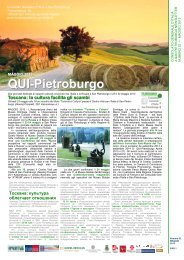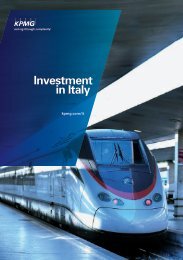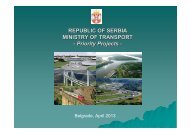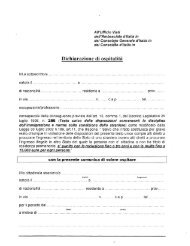Innovation Canada: A Call to Action
Innovation Canada: A Call to Action
Innovation Canada: A Call to Action
Create successful ePaper yourself
Turn your PDF publications into a flip-book with our unique Google optimized e-Paper software.
The Context of the Reviewdevelopment incentives may even be sufficientlyattractive <strong>to</strong> induce a shift over time in abusiness’s strategy <strong>to</strong>ward a greater focus oninnovation.Business <strong>Innovation</strong>:Beyond R&D<strong>Innovation</strong> occurs throughout the economy, inall sec<strong>to</strong>rs and in firms of all sizes. Consequently,business innovation involves much more thanR&D. This is abundantly clear in the OECD’sdefinition of innovation cited earlier and inBox 2.1. <strong>Innovation</strong> is found not only, or evenprimarily, in sec<strong>to</strong>rs associated with hightechnology, although the effective use oftechnology continues <strong>to</strong> be a key driver ofinnovation and productivity growth in moderneconomies. Even in sec<strong>to</strong>rs where R&D isprevalent, many innovations are developedwithout it. For example, based on survey datafrom 22 countries (including <strong>Canada</strong>’smanufacturing sec<strong>to</strong>r), a recent OECD reportindicates that “a large share of firms developtheir process, product, organizational ormarketing innovations without carrying outany formal R&D. This holds true even fornew-<strong>to</strong>-market innova<strong>to</strong>rs who successfullyintroduce innovations regarded as‘technological’” (OECD 2010a, p. 23).Research and development is nevertheless ofdisproportionate significance for the economy,since it contributes in an essential way <strong>to</strong>innovation in many of the most dynamic firmsand sec<strong>to</strong>rs that are at the leading edge of globalgrowth and value creation — for example, firmsthat either produce or intensively use pervasivetechnologies like ICT, biotechnology andadvanced materials. There is usually a closerelationship between activities that are heavilyknowledge based and those that require R&D.Business expenditure on R&D also correlatesstrongly with other standard indica<strong>to</strong>rs ofinnovation such as patents, exports oftechnology-intensive products and employmen<strong>to</strong>f people with advanced education. Moreover,the economic benefit of R&D spending is rarelyconfined <strong>to</strong> the R&D performer alone, andinstead “spills over” <strong>to</strong> other firms, thusamplifying the economic impact. For all of thesereasons, a thorough survey of the literature bythe US Congressional Budget Office concludedthat “a consensus has formed around the viewthat R&D spending has a significantly positiveeffect on productivity growth,” while allowingthat it is difficult <strong>to</strong> quantify the effect precisely(2005, p. 1).The Panel, consistent with its mandate <strong>to</strong>address business R&D in the larger context ofinnovation, considered not only thosegovernment programs that foster increasedbusiness R&D investment directly, but also thosethat support the key fac<strong>to</strong>rs that complementR&D in a firm’s innovation strategy. These arecaptured in Figure 2.4 as the four categoriesof enabling inputs needed <strong>to</strong> implement aninnovation strategy in cases where R&D is akey component. The four complementaryinnovation inputs are:ideas and knowledge that underpininnovationtalented, educated and entrepreneurialpeople whose imagination and energy drivethe development and implementation ofinnovative business strategiesnetworks, collaborations and linkages thatenable innovation partners <strong>to</strong> pool staff andresources, and <strong>to</strong> share information, risks andcostscapital and financing that help entrepreneursbuild a bridge between their innovative ideasand commercial viability.This review is focussed on federal initiatives <strong>to</strong>help businesses develop or access each of theseinputs. To set the context for the Panel’s findingsand recommendations in subsequent chapters,what follows is a discussion of the four2-11
















